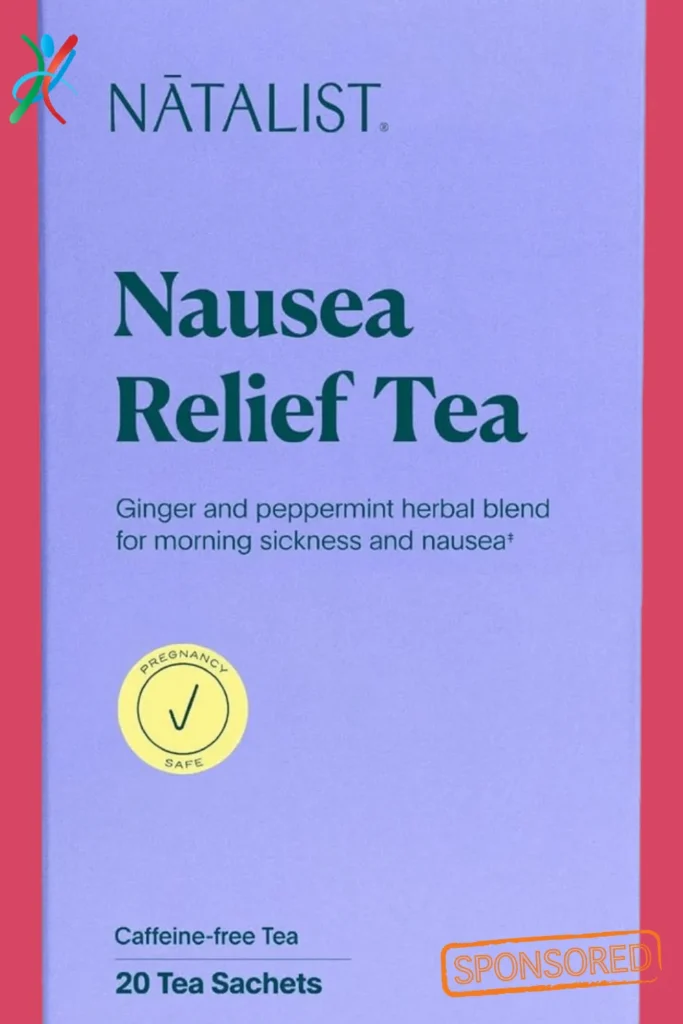Home Remedies for Nausea
Imagine the discomfort of a churning stomach, the unsettling prelude to vomiting.
Nausea is a common malaise that can derail your day.
Delving into its causes and symptoms is the first step to managing it effectively.
Ginger has been praised for centuries for its ability to ease stomach upset, while a simple inhaling of peppermint oil can soothe the senses.
Embrace a narrative that guides you through natural remedies straight from your own pantry and lifestyle habits that promote digestive tranquility.
Welcome to “Combat Nausea Naturally: Remedies You Can Try at Home,” your comprehensive guide to understanding, alleviating, and ultimately preventing the queasiness that can upend your daily life.
Nausea, a discomforting sensation in the stomach often preceding vomiting, is a prevalent issue that can disrupt your daily routine.
Understanding the causes and symptoms of this condition is crucial for effective management. Ginger, renowned for its ability to soothe an upset stomach, has been hailed for centuries, while inhaling peppermint oil can provide a calming effect.
This comprehensive guide, Combat Nausea Naturally: Remedies You Can Try at Home, explores natural remedies from your own pantry and lifestyle habits that promote digestive tranquility, helping you prevent and alleviate the unsettling feeling of nausea.
Table of Contents Home Remedies for Nausea
Understanding Nausea: Causes and Symptoms
Nausea is an unsettling and uncomfortable sensation in the stomach that often comes with the urge to vomit.
It can be triggered by a variety of factors, including certain odors, foods, emotions, and medical conditions or treatments.
Nausea is not only an unpleasant experience but also a symptom that can indicate underlying health issues.
It affects the brain, spine, abdominal organs, or inner ear and can be exacerbated by emotional stress, motion sickness, physical exertion, or overindulgence in food or drink.
Many pregnant individuals experience nausea, commonly referred to as morning sickness, which generally eases after the first trimester.
Although nausea and vomiting frequently occur together, one can experience nausea without the accompanying physical act of vomiting.
Symptoms associated with nausea can range from dizziness to an upset stomach, bloating, chest pains, and even chest pains, all of which could point to a need for medical attention if persistent or severe.
What is Nausea?
Nausea is a distressing sensation of unease and discomfort in the upper stomach with an involuntary inclination to vomit.
It can be a precursor to vomiting, but not all nausea culminates in this outcome.
Nausea can serve as a non-specific symptom and a defense mechanism, alerting an individual that something may be amiss internally.
Those suffering from nausea may encounter it in response to a host of different illnesses and situations, such as infections, allergic reactions, gastric reflux, migraines, motion sickness, or even side effects to certain medications.
Chronic or recurring nausea may be indicative of more serious conditions, including hepatitis, gastritis, ulcers, or conditions of the stomach flu, and should not be ignored.
To alleviate nausea, natural remedies such as ginger, mint, lemon, acupressure, and deep breathing exercises may provide relief.
Common Causes of Nausea
The causes of nausea are multifaceted and can stem from simple overindulgence to more complex medical issues.
Conditions such as gastrointestinal disorders, adverse reactions to medications, infections, hormonal changes during pregnancy, and even psychological factors like stress can provoke feelings of nausea.
Common scenarios where nausea manifests include motion sickness during travel or morning sickness during pregnancy.
Serious health challenges such as cancer treatments or heart attack symptoms may also manifest nausea as a symptom.
Other triggers can include overeating, undereating, or consuming alcohol in excess.
Additionally, anxiety and stress can physically influence the stomach, potentially leading to nausea, especially when experienced first thing in the morning.
Symptoms of Nausea
Nausea often comes with a suite of accompanying symptoms that can range in severity.
Individuals may experience dizziness, weakness, pale skin, and sweating, in addition to the sensation of an upset stomach and bloating.
In many cases, there may also be chest pains, blurry vision, confusion, and a dry mouth.
Additional physical signs may include clammy skin and an excess accumulation of saliva.
As nausea progresses, it may lead to vomiting, accompanied by headaches and a general feeling of discomfort.
Understanding these symptoms is crucial in determining whether nausea is a fleeting issue or a sign of a more serious condition, and whether it warrants medical treatment.
It’s important to monitor the extent of these symptoms and seek medical attention if they persist or are accompanied by signs of dehydration, such as the presence of coffee grounds in vomit or a severe headache.
Natural Remedies for Nausea
Nausea can be an incredibly disruptive and uncomfortable sensation, affecting daily activities and overall well-being.
While there are over-the-counter and prescription medications available to help alleviate this symptom, many individuals prefer natural and home-based remedies for mild to moderate nausea.
These remedies are often easily accessible, cost-effective, and can offer relief without the risk of pharmaceutical side-effects.
Among the commonly recommended natural remedies for nausea are ginger, peppermint, and deep breathing exercises.
These remedies have been studied and utilized for their antiemetic properties – meaning they help prevent or relieve nausea and vomiting.
Consuming ginger in various forms, such as tea or capsules, may help soothe an upset stomach.
Peppermint, used as a tea or essential oil, has a calming effect on the gastrointestinal tract.
And deep breathing techniques can assist in reducing the stress response that may exacerbate nausea symptoms.
It is important to consume several small meals throughout the day rather than three large ones to manage nausea better and stick to bland foods like crackers or toast to avoid aggravating the stomach.
Additionally, staying hydrated with small sips of water can maintain fluid balance and support digestion to help combat feelings of nausea.
Ginger: A Natural Nausea Fighter
Ginger is a renowned natural remedy with a strong history of easing symptoms of nausea.
Compounds in ginger, such as gingerols and shogaols, are suggested to function similarly to anti-nausea medications.
These substances can help increase the speed of gastric emptying, which means food doesn’t linger in the stomach as long, potentially reducing feelings of nausea.
Research specifically points to ginger’s effectiveness in diminishing nausea and vomiting in pregnant women, a condition known as morning sickness, without causing harm to the fetus.
About 1 gram per day of ginger can notably reduce nausea and vomiting symptoms arising from pregnancy, motion sickness, and even after surgery or cancer treatments.
A simple way to tap into ginger’s benefits is by making your own ginger lemon tea.
Boil some fresh ginger slices in water for a few minutes, strain, and then add lemon juice for a soothing warm beverage.
The zesty smell and taste can help suppress nausea while offering a comforting sensation to an unsettled stomach.
Peppermint: Soothing and Refreshing
The peppermint plant contains several active ingredients, with menthol being the primary one, offering its signature soothing and cooling effect.
This minty herb is effective in relaxing the muscles of the stomach, potentially easing the spasms that contribute to nausea and vomiting.
In fact, peppermint oil aromatherapy has proven to be beneficial in reducing nausea among cancer patients undergoing chemotherapy.
It can be applied below the nose or diffused in the air for inhalation.
The invigorating scent of peppermint may quickly work to diminish nausea for many individuals.
Moreover, peppermint tea, prepared from fresh or dried peppermint leaves, is another gentle remedy that may offer symptomatic relief.
Whether dealing with a bout of indigestion, irritable bowel syndrome, or simple nausea, peppermint tea is an easy way to tap into the natural benefits of this herb.
Deep Breathing: Relaxing the Body and Mind
Deep breathing exercises are a powerful tool in managing nausea, especially when it has a stress or anxiety-related component.
A study with breast cancer patients found that those who practiced controlled deep breathing reported a significant reduction in chemotherapy-associated nausea and vomiting.
By taking slow, deep breaths, the body engages the parasympathetic nervous system, which is responsible for the ‘rest and digest’ response.
Stimulating the vagus nerve through deep breathing exercises not only relaxes the body but can also decrease the feelings of nausea by reducing the stress response.
A simple deep breathing technique involves inhaling slowly through the nose, holding the breath briefly, and then exhaling slowly through the mouth.
Practice these breaths for several minutes, allowing the calming effect to wash over you.
For a more structured approach, progressive muscle relaxation, which involves tensing and relaxing different muscle groups, can also be helpful in conjunction with deep breathing for managing nausea symptoms.
Lifestyle Changes to Combat Nausea
Managing nausea often involves more than just short-term remedies.
Making small modifications in your day-to-day life can have a significant impact on reducing the frequency and intensity of nausea.
Implementing a few key lifestyle changes can help create an environment that minimizes discomfort and supports recovery.
First and foremost, consider the composition of your daily meals.
Eating a bland diet that consists of foods like bananas, rice, applesauce, crackers, or baked potatoes helps to soothe the digestive system and reduce the likelihood of an upset stomach.
These items are gentle on the stomach lining and less likely to provoke nausea.
Next, be mindful of portion sizes and meal frequency.
Opting for smaller, more frequent meals when you’re feeling nauseated can help your stomach manage the digestion process better, which may in turn reduce symptoms of nausea.
Moreover, protein-rich foods have been found to improve nausea symptoms more effectively compared to high-fat or carbohydrate-heavy meals, possibly due to their longer satiety and stabilizing effect on blood sugar levels.
In addition, after eating, try to remain upright for 30-60 minutes.
This simple practice can prevent nausea that may arise from gastroesophageal reflux disease (GERD) where stomach acid moves back up into the esophagus.
Taking these steps and adjusting your diet to include bland, easy-to-digest foods not only supports overall health but can be particularly beneficial for those who suffer from frequent episodes of nausea.
Bland Foods: Gentle on the Stomach
When it comes to food choices that are friendly to an upset stomach, a few key items are known to be particularly gentle and are commonly recommended for those experiencing nausea:
- The BRAT diet, an acronym for bananas, rice, applesauce, and toast, is specially designed to be gentle on the stomach and can be helpful in easing nausea.
- Plain chicken or soup can be nourishing without being too heavy.
- Applesauce and bananas provide important nutrients and energy without causing irritation.
- Saltine crackers are an excellent choice for slowly reintroducing food to a queasy stomach.
- When you’re ready to diversify your food intake, plain poached eggs, chicken, bread, or plain pasta are all about as mild as it gets, minimizing the chance of triggering nausea.
Ensuring you eat these bland items in small, frequent meals can provide a constant, gentle influx of nutrients, which can help stabilize your stomach, thereby reducing episodes of nausea.
Stay Hyridged: Signs of Dehydration to Watch Out For
Staying hydrated is vital for overall health and is even more crucial when you’re experiencing nausea, particularly if it leads to vomiting or diarrhea.
However, it’s important to recognize signs of dehydration since nausea can sometimes make drinking fluids challenging.
Children are at higher risk for dehydration, especially when they have symptoms like vomiting and diarrhea.
Signs to watch for in children include sunken eyes, dry lips, rapid breathing and pulse, and decreased urination.
Infants may show additional signs like a sunken fontanelle.
In adults, the risk of dehydration is lower because they can recognize symptoms early on.
Signs such as an increased thirst, dry mouth, reduced urination, and dark yellow urine are cues to increase fluid intake.
Staying aware of these indicators is essential, not only for self-care but also for those looking after others, especially children.
Sips of water throughout the day or the use of electrolyte solutions can be effective ways to maintain hydration.
Remember, avoiding dehydration can help prevent nausea from becoming worse and supports overall recovery.
Seek Medical Attention if Necessary
While home remedies can often provide relief from mild cases of nausea, certain situations call for professional healthcare attention.
Not all causes of nausea can or should be managed at home, and understanding when to seek medical treatment is critical for your health and wellbeing.
For severe or persistent nausea and vomiting, especially when it stretches beyond the first trimester during pregnancy, reaching out to a healthcare provider is essential.
Such prolonged conditions might signal hyperemesis gravidarum in pregnant women, which can require medication and intravenous (IV) fluids to treat.
When home remedies fail to reduce the severity of nausea and vomiting, or if signs of dehydration appear, it’s time to call your doctor.
This is especially important for infants and young children under six, who may not be able to communicate the seriousness of their condition and can deteriorate quickly.
If vomiting in children persists for more than a few hours, or if it’s accompanied by diarrhea, medical help should be sought without delay.
Finally, if your nausea and vomiting are tied to known factors such as a head injury, suspected infection, or ingestion of a toxin, you should seek immediate medical care to prevent complications or further health issues.
When to Consult a Healthcare Professional
Sometimes, nausea can persist despite taking anti-nausea medication or using home remedies.
The following scenarios are clear indicators that it’s time to consult with a healthcare professional:
- Nausea that doesn’t subside even after taking prescribed anti-nausea medication.
- Failure to improve as one would normally expect after a bout of nausea.
- Symptoms such as frequent vomiting, acute chest pain, or the presence of blood in the vomit or stool.
- Prolonged nausea that gets worse over the course of several days, as it may denote the presence of an underlying condition requiring medical assessment.
- Nausea accompanied by symptoms that can indicate serious health issues like acute pancreatitis, bowel obstructions, or potential cardiac events.
Recognizing these signs and seeking the appropriate medical help could be lifesaving or prevent the condition from worsening.
Medical Treatment Options for Nausea Relief
There are several medical treatments that a doctor may advise to alleviate persistent nausea:
- Antiemetic Medication: These drugs are formulated to counteract vomiting and nausea.
- They can be administered orally, intravenously, or in some cases, as a suppository.
- Prescription Practices: Physicians might instruct patients to eat before treatments, such as chemotherapy, that are known to cause nausea.
- Anti-nausea medicines might also be prescribed to be taken routinely to preempt symptoms.
- Over-the-Counter Medicines: Medications like dimenhydrinate (Gravol) or antihistamines can be suggested to help control nausea, especially if it’s related to motion sickness
- Review of Current Medications: Nausea may be a side effect of medications you’re currently taking.
- A healthcare provider can help determine if this is the case and suggest alternatives or adjustments to your treatment plan.
If nausea continues for more than a day even after the use of home remedies and there’s no clear, benign cause, it’s advisable to get in touch with a healthcare provider.
They can conduct a thorough evaluation to identify the root of the problem and recommend a suitable treatment regimen.
Prevention Tips: Keeping Nausea at Bay
Nausea is an unpleasant sensation and can have a significant impact on your daily life.
However, there are effective ways to prevent this discomfort before it starts.
Eating smaller, more frequent meals can help maintain a balanced stomach environment, preventing the overly full feeling that often leads to nausea.
It’s also prudent to note which foods prompt nausea and avoid them.
Common culvert culprits include greasy, spicy, and heavily fragrant dishes.
Opting for bland, digestible foods, like rice or bananas, may soothe your digestive system.
Hydration is also crucial; sipping electrolyte-rich fluids such as mineral water or sports drinks can help keep nausea at bay.
Regular physical activity, such as simple yoga stretches, has the added benefit of easing digestive woes and reducing feelings of nausea.
By incorporating these preventative habits, you can help keep nausea away and improve your overall digestive health.
Avoid Triggers: Spicy and Greasy Foods
Foods that are high in fat, overly spicy, or have strong odors can trigger nausea in many people.
To minimize the risk, it’s best to steer clear of these potential irritants and favor lighter, milder foods.
Incorporating a bland diet with items such as curd, muffins, toast, potatoes, and rice can offer relief and help settle your stomach.
The BRAT diet—comprising bananas, rice, applesauce, and toast—is a time-tested regimen to alleviate symptoms of nausea.
Furthermore, simple foods like crackers, plain chicken, and saltine crackers can also provide comfort without overburdening your digestive system.
By sticking to these gentler options, you can effectively reduce the likelihood of experiencing nausea.
Mindful Eating: Slow Down and Chew Properly
The way we eat can greatly influence our digestion and the occurrence of nausea.
Mindful eating, which includes savory, small meals, can be a strategic approach to alleviate nausea.
Savor each bite, chew your food thoroughly, and pace yourself during meals.
Make it a habit to rinse your mouth before and after eating, which can help freshen your taste buds and prevent aftertaste that might lead to nausea.
Dietary adaptations such as choosing bland, soft foods and remaining in an upright posture for at least an hour after consumption can further aid your digestive process and decrease the likelihood of nausea setting in.
Morning Rituals: Start the Day Right
Morning sickness is a common challenge, particularly during pregnancy.
Starting the day with certain rituals can make a substantial difference.
Natural solutions like ginger, in the form of supplements or ginger tea, have a proven track record in reducing the incidence of nausea and vomiting.
Similarly, the scent of peppermint essential oil can bring about relief when inhaled.
To maintain hydration and ease nausea symptoms at the start of your day, sipping on herbal tea, lemonade, or water is advisable, while the cold sensation of ice chips or popsicles can also be soothing.
Moreover, acupressure techniques specifically targeting the wrists might offer reprieve from mild nausea and are easily supported through the wearing of acupressure wristbands.
With these simple morning rituals in your daily routine, you can effectively combat nausea and set a positive tone for the rest of your day.







